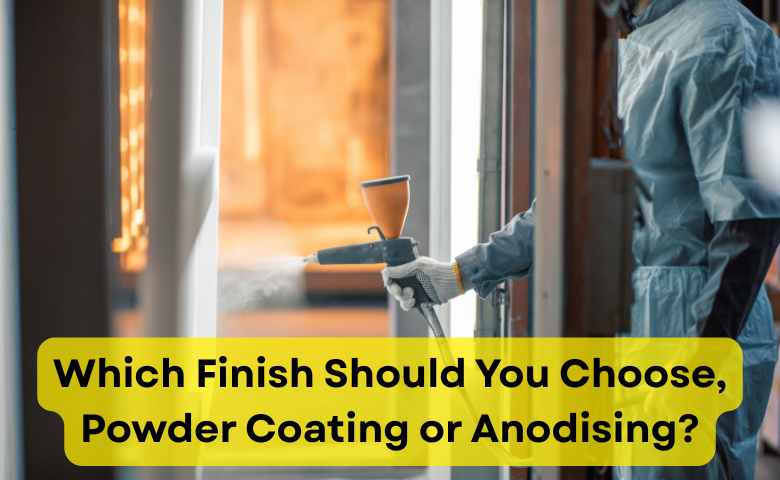Last Updated on September 25, 2025 by Admin
In metal fabrication, the finishing stage carries just as much weight as the design itself. The choice of finish influences not only the appearance of a component but also how well it performs and how long it lasts. Aluminium panels, steel structures, and decorative pieces all require a finish that balances durability, function, and aesthetics.
Among the many options available, powder coating and anodising tend to dominate the conversation. Both methods protect and enhance metal, but their differences make them better suited to different contexts. For anyone considering powder coating services in Melbourne, understanding how these two finishes compare is the first step toward making a sound decision.
Table of Contents
How Powder Coating Is Applied And Why It Performs So Well
Powder coating, as the name implies, involves applying a fine powder to the surface using electrostatic charge. Once applied, the item is placed in a curing oven where the powder melts, flows, and hardens into a uniform layer. The outcome is a sleek, durable coating that resists corrosion, chips, and scratches.
One of the most appealing aspects of powder coating is its versatility. Available in an impressive range of colours and textures, it can achieve anything from a glossy automotive sheen to a subtle matte finish for architectural fixtures. Outdoor furniture, machinery, and vehicle parts are common candidates because the coating holds up under constant use and exposure to the elements.
It is also an environmentally friendly option. Powder coatings contain no solvents or volatile organic compounds, which makes them less harmful during application. Excess powder can even be collected and reused, reducing waste without sacrificing quality.
How Anodising Enhances Aluminium By Altering Its Surface
Anodising takes a different approach, one that is exclusive to aluminium. Through an electrolytic process, the surface of the metal is oxidised in a controlled way, thickening its natural protective layer. This is not a coating sitting on top but rather a transformation of the surface itself.
The result is a matte, metallic appearance that feels authentic to aluminium while offering long-lasting protection. Because the finish is integral to the metal, it won’t peel or flake. Colour can be introduced through dyes, though the palette tends to be more restrained than what powder coating allows.
Anodised aluminium is widely used in architectural cladding, consumer electronics, and marine applications where resistance to UV light and corrosion is crucial. Its sleek, modern aesthetic makes it particularly attractive in projects where a clean metallic look is the goal.
Balancing Performance, Costs, And Environmental Factors
When comparing the two, it becomes clear that each has its own strengths. Powder coating provides a thicker, more impact-resistant layer that stands up to knocks and scrapes. It is the go-to for parts likely to endure physical stress. Anodising, while harder in structure, can show surface wear more easily but excels in retaining its colour and finish under harsh sunlight.
On the cost side, powder coating often proves more economical for larger pieces or when quick turnaround is needed. Anodising, being more precise and limited to aluminium, generally involves higher upfront costs.
From an environmental perspective, both perform reasonably well. Powder coating avoids solvent emissions and allows for recycling of overspray. Anodising produces very little hazardous waste, though it does require significant water and energy in processing.
Takeaways
The right finish depends on the nature of the project. If your work involves steel or you want a bold colour selection with a robust coating, powder coating is the obvious fit. If you’re dealing with aluminium and want a finish that’s integral to the metal with strong UV resistance, anodising may be the smarter option.
For many commercial and industrial jobs, consulting with surface finishing professionals is the best way forward. They can guide you on durability, budget considerations, and the visual outcome you’re hoping to achieve.
Related Posts
- Everything You Need to Learn About Aluminum Scaffolding Systems
- National Aluminium Recruitment 2022 for Jr. Foreman | 08 Posts | 30-09-2022
- 6 Things to Remember in Your Small House Floor Plan
- The Ultimate Guide to the Different Types of Garage Floor Coatings
- The Ultimate Guide to Metal Buildings: Everything You Need to Know


